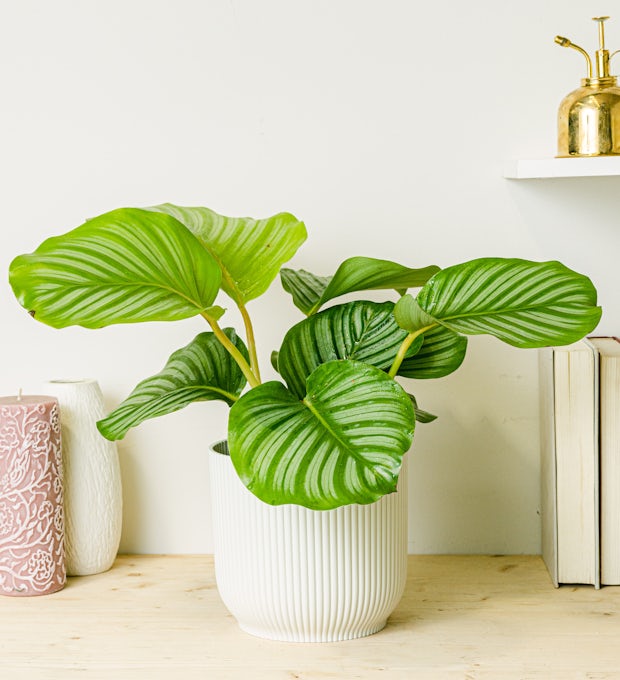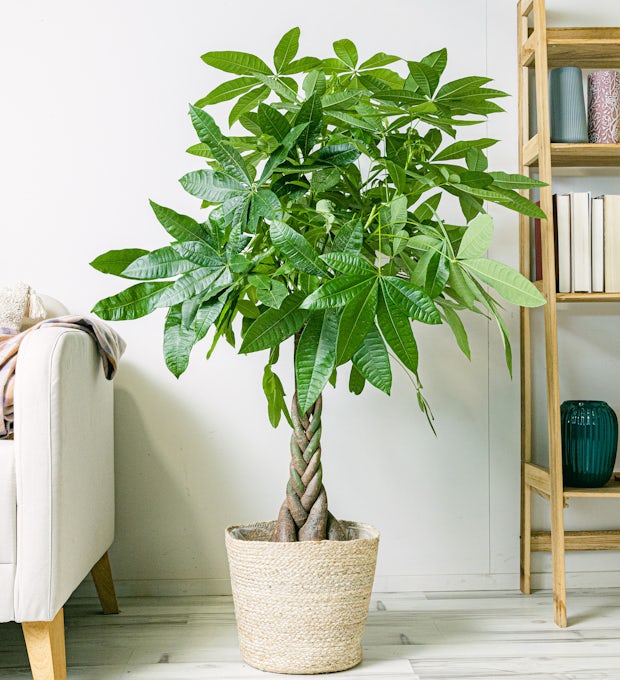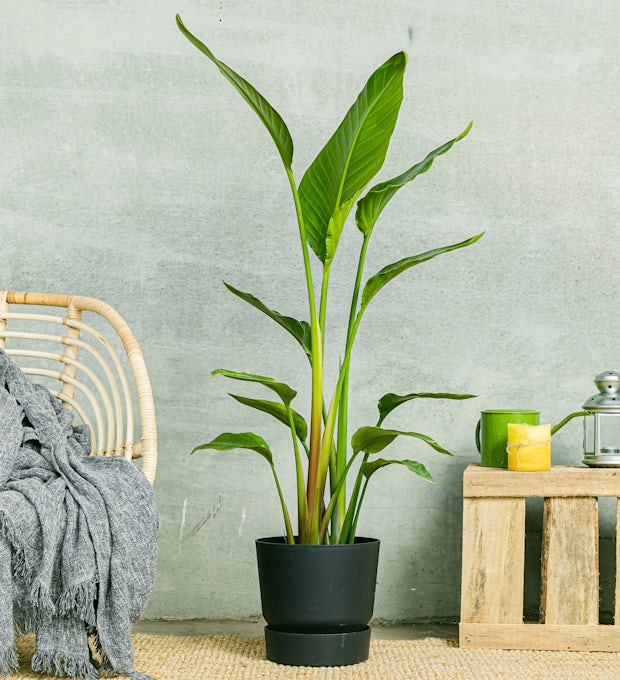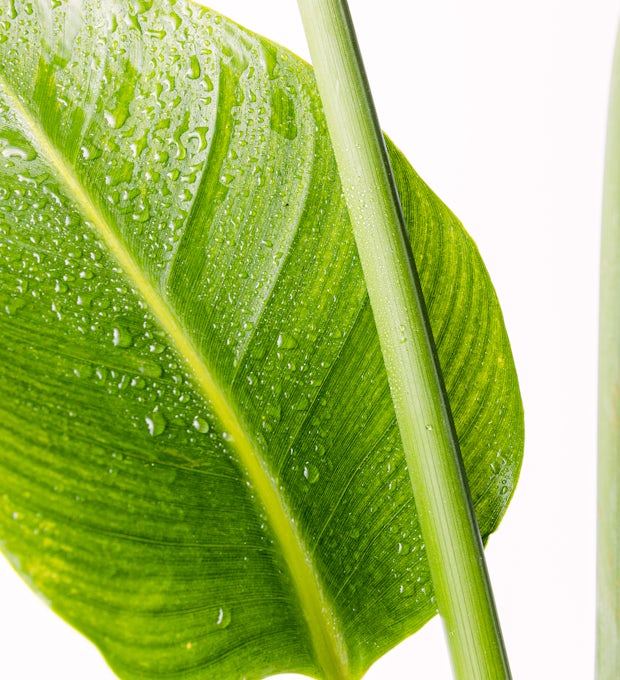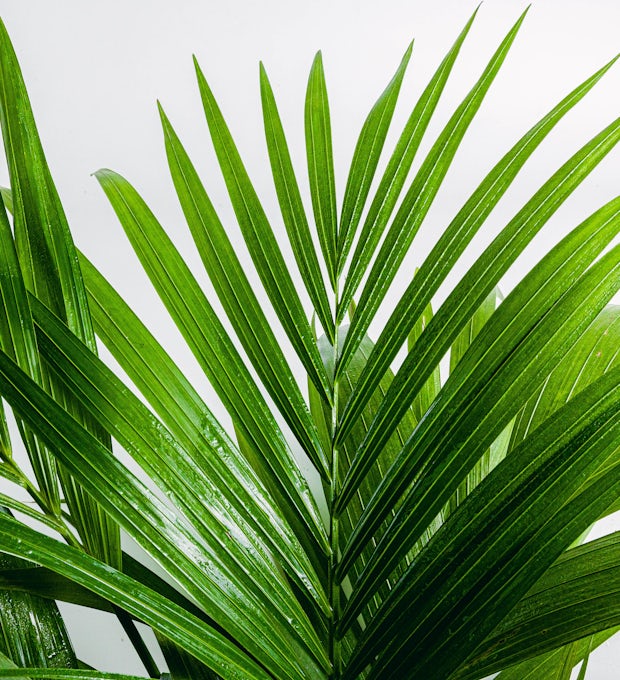If you are looking for a plant that will bring color and exoticism to your home, the bird of paradise is an excellent option. This tropical plant native to South Africa is known for its showy, bird-shaped flowers and ease of care. In this article, we offer you expert tips for decorating your home with the Bird of Paradise. You will learn about selecting the perfect place to place it, the basic care it needs, how to prune and feed it properly, how to multiply it and we will also give you creative ideas to integrate it into your home decoration. Read on to find out everything you need to know!
The Exotic Charm of the Bird of Paradise
The exotic charm of the Bird of Paradise lies in its unique and eye-catching look that brings a tropical and vibrant touch to any space. This plant, also known as Strelitzia reginae, is native to South Africa and has become a popular choice for interior décor due to its colorful flowers and lush foliage. The flowers of the Bird of Paradise are large and look like tropical birds in flight, with deep orange and blue petals contrasting with their green bract. This combination of colors and shapes creates a striking visual effect that captures the attention of anyone who sees it. In addition to its exotic appearance, the Bird of Paradise is also prized for its long duration, as its flowers can last up to eight weeks. This makes it an ideal choice for those who wish to have a houseplant that provides beauty for an extended period. In short, the exotic charm of the Bird of Paradise lies in its unique and vibrant appearance, which brings a tropical touch to any space and captivates with its striking flowers in the form of tropical birds.
Selecting the Perfect Spot for Your Bird of Paradise
Selecting the perfect spot for your Bird of Paradise is crucial to its healthy growth and development. This tropical plant requires a location that provides it with enough indirect sunlight. Find a place in your home where it can get at least 4-6 hours of bright light, but avoid direct sun exposure during the hottest hours of the day. Temperature is also an important factor to consider. Make sure to place your Bird of Paradise in a place where the temperature remains constant, between 18-24 degrees Celsius. Avoid hot or cold drafts, as this can negatively affect the plant. Also, take into account the size of your Bird of Paradise when selecting its location. These plants can grow to considerable heights, so it's important to choose a space that allows them to expand without restriction. Finally, keep in mind that the Bird of Paradise is a drought-resistant plant, but it still needs an adequate level of humidity. Therefore, make sure to place it in a place with a relative humidity between 50% and 70%. By following these tips and carefully selecting the perfect spot, you will be able to enjoy a beautiful Bird of Paradise in your home.
We ship plants to all locations, you can see more options here.
Basic care: water, light and temperature
Basic care of any plant is critical to its survival and the Bird of Paradise is no exception. Water, light, and temperature are three key factors to consider when caring for this tropical plant. As for water, it is important to water it regularly but without waterlogging, as excess water can rot the roots. It is also advisable to spray the leaves with water from time to time to keep them hydrated and dust-free. As for light, the Bird of Paradise needs moderate exposure to the sun, but we should avoid direct light during the hottest hours of the day, as this can burn its leaves. It is advisable to place it in a bright room but without direct sunlight throughout the day. Finally, temperature is another important factor to consider. The Bird of Paradise does best in warm and humid temperatures, so we should avoid placing it near cold drafts or powerful heaters that can dry out its leaves. In summary, to keep our Bird of Paradise healthy and beautiful we must water it properly, provide it with moderate exposure to the sun and place it in a place with warm temperatures and without cold drafts.
We ship plants to all locations, you can see more options here.
The Art of Pruning: Keeping Your Bird of Paradise in Shape
Pruning is an essential part of caring for your Bird of Paradise, as it allows you to keep it in shape and encourage healthy growth. When pruning your plant, you should be sure to remove any dead or damaged leaves or branches, which will promote regeneration and prevent the plant from weakening. You can also perform a training pruning to give your Bird of Paradise the desired appearance. This involves trimming off longer or messier branches to maintain a balanced and aesthetic shape. It is important to use clean, sharp pruning tools to avoid damaging the plant and prevent disease. Remember that pruning should be done during the plant's active growing season, usually in spring or fall. However, avoid pruning in winter, as this can weaken it. Also, don't forget to remove any faded flowers to encourage more blooming. With proper care and regular pruning, your Bird of Paradise will look beautiful and maintain its exotic charm in your home.
Fertilizers and Nutrients: Feeding Your Tropical Plant
Proper fertilization is critical to keeping your tropical bird of Paradise plant healthy and vibrant. These plants have high nutritional demands due to their rapid growth and lush foliage. It is important to choose nutrient-rich fertilizers that provide the necessary elements for optimal plant development. liquid fertilizers are a popular choice, as they can be easily diluted in water and applied directly to the soil or sprayed on leaves. Look for a balanced fertilizer with a ratio of nitrogen (N), phosphorus (P), and potassium (K) of 10-10-10 or similar. Apply the fertilizer every two weeks during the spring and summer, when the plant is at its most active growth period. However, be careful not to overfertilize, as this can burn the roots and damage the plant. In addition to fertilizer, it is also important to provide additional nutrients through organic fertilizers, such as compost or decomposed manure. These materials help improve soil structure and gradually release nutrients as they decompose. Be sure to follow the application instructions on fertilizers and fertilizers, and see how your Bird of Paradise responds to adjust the amounts if necessary. With proper feeding, your tropical plant will thrive and provide you with its beautiful foliage for a long time.
The Multiplication of Beauty: Propagation of the Bird of Paradise
Propagating the Bird of Paradise is a simple and rewarding task for those who wish to multiply the beauty of their tropical plant. There are two main methods of propagating the Bird of Paradise: by seed and by clump division. Propagation by seed is the most common method, as seeds are easy to obtain and germinate easily. To do this, it is important to collect the mature seeds of the mother plant, remove the pulp that surrounds them, and let them dry in the sun for a few days before sowing them in a mixture of soil and sand. On the other hand, the division of clumps is done by separating the lateral stems of the mother plant and transplanting them into individual pots. It is important to wait until the shoots are at least 30 centimeters tall and have some roots of their own before separating them from the mother plant. Once transplanted, it is important to water them frequently and keep them in a warm, bright place so that they can develop properly. With these simple steps, anyone can multiply their collection of Birds of Paradise and enjoy their exotic beauty in different corners of the home.
Creative ideas to integrate the Bird of Paradise into your home décor
Home décor can be a challenging task, but with the inclusion of plants like the Bird of Paradise, an exotic and inviting atmosphere can be created. There are several creative ways to integrate this tropical plant into your home décor. One idea is to place the plant in a large pot and place it in a corner of the room to create a focal point. It can also be used as a decorative element at the entrance of the home or on a terrace to give a tropical touch to the space. Another option is to hang several plants from the ceiling, creating a curtain of green leaves that adds depth and texture to the room. In addition, the leaves of the Bird of Paradise can be used to create eye-catching and colorful floral arrangements that can be placed on tables or shelves. If you're looking for a more subtle option, you can use textiles with tropical leaf motifs that match the vibrant colors of the plant. Finally, you may want to consider painting a wall with a deep green hue to complement the beauty of the plant. In short, the possibilities are endless when it comes to integrating the Bird of Paradise into home décor, allowing homeowners to express their personal style while enjoying the natural and exotic beauty of this beautiful plant.
In short, the Bird of Paradise is a fascinating and versatile plant that can add an exotic touch to any home. With its eye-catching flowers and easy care, it is an ideal choice for those who want to beautify their space with a tropical plant. From selecting the right spot to keeping it fit through pruning and providing it with the necessary nutrients, we've explored all the key aspects to ensure the healthy growth of this plant. In addition, we have discovered how to multiply its beauty through propagation. Now it's your turn to let your imagination run wild and find creative ways to integrate the Bird of Paradise into your home décor. What ideas do you come up with? How can you get the most out of this unique plant? The answer is in your hands, so let the beauty of the Bird of Paradise flourish in your home!
